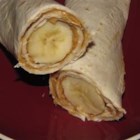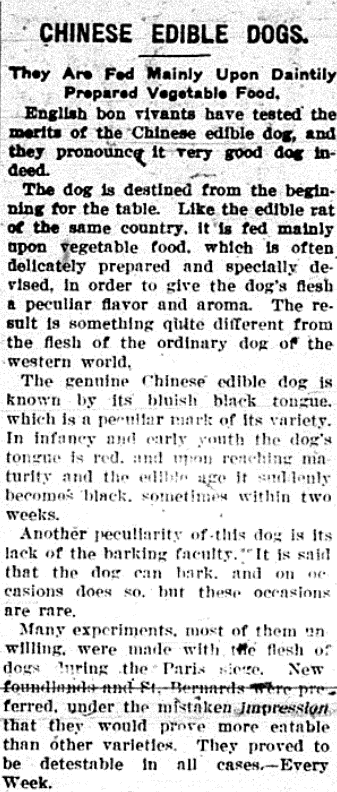Tea-making in action
January 24th, 2011 at 11:00 pm (Engineering, Food, Plants, Productivity)
I recently had the pleasure of seeing tea being made into tea bags, right before my eyes! While in Boulder, CO, for a conference, I stopped by the Celestial Seasonings tea factory. They have not only a wonderful gift shop but also a free tea-tasting bar filled with great art and a free tour of their factory facilities.
After donning a hair net (plus beard net for whiskered men), we entered the factory and got to see black tea being milled (chopped up), filling the air with the most delicious odors. We walked past bales of herbs piled to the ceiling, filled with hibiscus and chamomile and tilia and all sorts of other things. We entered the tea room, where actual tea (black, green, and white) is stored, and then the “world famous” mint room, which of course is filled with mint. It turns out that a room full of mint bales, kept closed 99% of the time, builds up an overpowering mintness. Two feet into the room, my nose started to tingle and then burn faintly. I couldn’t get back out because of the flow of people coming in, so I edged over to the spearmint side of the room since it was less painful than the peppermint side.
 Next we entered the main assembly room floor. This was so awesome I’m having trouble putting it in words. It was heaven for any tea-loving geek — like Willy Wonka’s Chocolate Factory, but with tea! Little conveyor belts sent half-assembled boxes of tea zooming around the room, pausing to be folded or stamped or sealed or wrapped in plastic, all by amazing automated machines. I wanted to stop and stare and figure out all of their gears and mechanics, but the tour kept pushing onward. Perhaps most intriguing was their “Robotic Palletizer”, which picked up packed cartons tea boxes in groups of six and stacked them precisely on a pallet. Later I saw the whole pallet being spun so it could be wrapped in plastic, a 6-foot stack of tea cartons all wound up like a cocoon. I could have spent the whole afternoon watching this busy, enchanting process.
Next we entered the main assembly room floor. This was so awesome I’m having trouble putting it in words. It was heaven for any tea-loving geek — like Willy Wonka’s Chocolate Factory, but with tea! Little conveyor belts sent half-assembled boxes of tea zooming around the room, pausing to be folded or stamped or sealed or wrapped in plastic, all by amazing automated machines. I wanted to stop and stare and figure out all of their gears and mechanics, but the tour kept pushing onward. Perhaps most intriguing was their “Robotic Palletizer”, which picked up packed cartons tea boxes in groups of six and stacked them precisely on a pallet. Later I saw the whole pallet being spun so it could be wrapped in plastic, a 6-foot stack of tea cartons all wound up like a cocoon. I could have spent the whole afternoon watching this busy, enchanting process.
Right there at the factory, the various herbs and constituents are magically converted into a lovely beverage experience. They mill, mix, and bag the tea (using unique no-string teabags so as to save frightening amounts of paper), then deposit the bags into boxes that are sealed and sent off for distribution and sale. You can get some glimpses of this geeky awesomeness through the Celestial Seasonings virtual tour; click on the tea cups marked “3” and “4”. Enjoy!
How to peel a banana
December 4th, 2010 at 10:40 am (Food)
I think we’ve all had the frustrating experience of struggling to open a banana in which the peel won’t split near the stem, which obnoxiously manages to be the strongest part of the fruit — so you pull out a knife to get it started, or just end up mashing the top of the banana in your attempt to get it open. And yet somehow it never occurred to to me to try peeling it… from the other end!
Known as the “monkey method” of peeling a banana, this approach is trivially easy to achieve. You simply pinch or twist at the bottom end of the banana, and it obligingly splits open. I’m astonished that it never even occurred to me to explore better ways to do this. Wow! (Thanks for the tip, Evan!)
| Standard | Monkey |
|---|---|
 |
 |
Beyond that, there are apparently many strategies for peeling a banana that differ from the “standard” (and apparently suboptimal) approach. I’ve already employed the “thumbnail method” in the past, when a knife was lacking and I was still ineffectually wrangling with the stem end. Now I’m eager to try the “throwing method.” And do read to the bottom of that link to learn about the “pro method.”
Sold by weight, not volume
August 28th, 2010 at 5:15 am (Food)
 I recently rediscovered a favorite Australian candy bar of mine, Violet Crumble. It’s made of “honeycomb” on the inside and coated with a thin layer of chocolate. The chocolate provides not only flavor but also function: honeycomb is hygroscopic (absorbs water from the air), and the chocolate forms a barrier to keep water out (and the honeycomb dry and crunchy).
I recently rediscovered a favorite Australian candy bar of mine, Violet Crumble. It’s made of “honeycomb” on the inside and coated with a thin layer of chocolate. The chocolate provides not only flavor but also function: honeycomb is hygroscopic (absorbs water from the air), and the chocolate forms a barrier to keep water out (and the honeycomb dry and crunchy).
Browsing the food label highlighted some interesting differences between Australia’s take on nutrition and our own. Most of the information is the same, although metric units are used (naturally) and energy is listed in kilojoules rather than calories. The ingredient list caught my eye because it associates a percentage with each item, something I’ve never seen in the U.S. And in this case, Violet Crumble was listed as being 59% chocolate and 40% honeycomb. As you can see from the picture, this clearly is not determined by their volume, but rather something else. I determined via google that these percentages are based on “ingoing weight” (prior to cooking/baking/mixing/preparing).
My candy bar is 17 cm long by 3.5 cm wide by 2.2 cm high (on average), for a total volume of 130.9 cm3. The chocolate layer appears to be about 1 mm thick, yielding a shell volume of ~21 cm3, leaving ~110 cm3 for the honeycomb. The whole bar weighs 50 g, so if we apportion weight using the above percentages, that’s 29.5 g of chocolate and 20 g of honeycomb. We can then determine the density of each, yielding 1.4 g/cm3 for chocolate and 0.18 g/cm3 for honeycomb. The only relevant density report I could find online is a figure of 1.325 g/cm3 for semi-sweet chocolate, so this at least seems reasonable. And just think, all this was possible because Australians include percentages in their ingredient lists!
Change your diet, your exercise, and your community
May 6th, 2010 at 12:00 pm (Cooking, Food, Society)
At a recent community event, I came across a booth put up by Champions for Change, a California organization devoted to improving health through the consumption of fruits and vegetables, exercise, and community activism. Their website is interesting to browse, containing not only a plethora of healthy recipes and tips for increasing your physical activity, but also strongly encouraging readers to agitate for change where change is needed. From How to Make Healthy Changes:
Examples of things you can advocate for in your community:
- Ask your local grocery store to sell quality fruits and vegetables at a low price.
- Ask for a local farmers’ market in your community.
- Ask about starting a community garden in your neighborhood.
- Work with local schools to get after-hours and weekend access to play yards, gyms, and/or parks.
- Ask the Department of Transportation to add bicycle lanes in your community.
- Partner with the Department of Parks and Recreation to clean up the walking paths in your local parks.
I was really impressed by how, rather than expecting you to passively receive and implement someone else’s tips for healthy living, this organization emphasizes your active role in identifying ways your community can be improved and then making those changes happen. And that can apply much more broadly than just to physical health issues, of course!
 Locally, Champions for Change goes into our elementary schools and shows kids what healthy meals look like. Ideally, we’ll get away from the specter of children unable to identify a tomato! At the booth, they were making and giving out samples of Banana Tortilla Snacks: spread some peanut butter on a wheat tortilla (only in a single stripe, not coating the whole thing), sprinkle some raisins on, then peel a banana and put it on top, then roll the tortilla up. You have an instant, easy snack that can be consumed by the maker or sliced up to provide multiple tasty treats for others. This is considered healthy due to its inclusion of fruits and protein without going overboard on carbs and fat. It’s so tasty that I feel a little skeptical about just how “healthy” it is, but I’m not complaining. :) I could probably do with a larger dose of fruit, vegetables, protein, and exercise in my own life… and maybe even some community-oriented activism!
Locally, Champions for Change goes into our elementary schools and shows kids what healthy meals look like. Ideally, we’ll get away from the specter of children unable to identify a tomato! At the booth, they were making and giving out samples of Banana Tortilla Snacks: spread some peanut butter on a wheat tortilla (only in a single stripe, not coating the whole thing), sprinkle some raisins on, then peel a banana and put it on top, then roll the tortilla up. You have an instant, easy snack that can be consumed by the maker or sliced up to provide multiple tasty treats for others. This is considered healthy due to its inclusion of fruits and protein without going overboard on carbs and fat. It’s so tasty that I feel a little skeptical about just how “healthy” it is, but I’m not complaining. :) I could probably do with a larger dose of fruit, vegetables, protein, and exercise in my own life… and maybe even some community-oriented activism!
